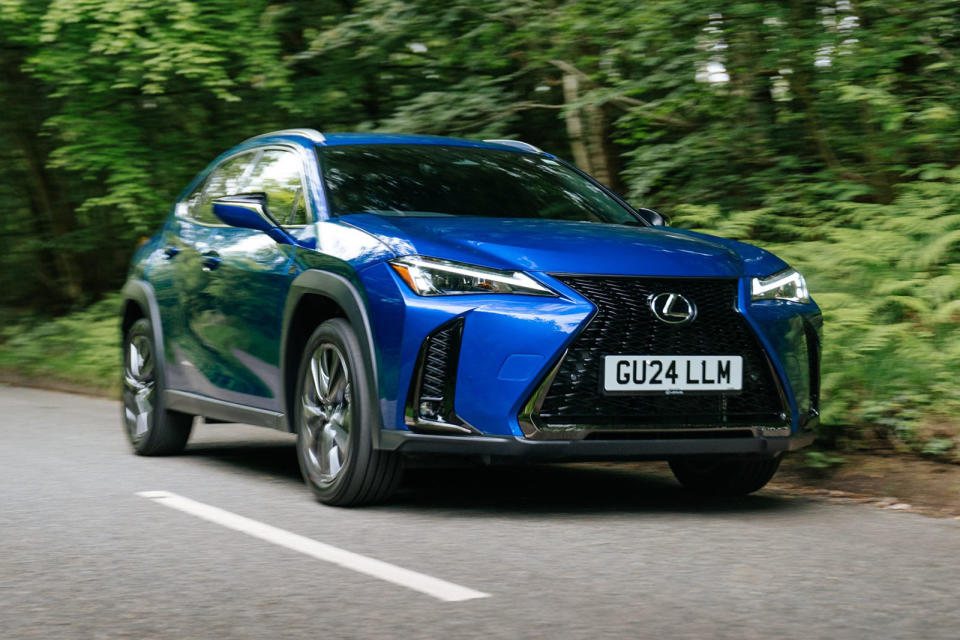Lexus UX

Lexus could hardly be happier right now. Its UK sales volume is at an all-time high and the new LBX has received more than 10,000 expressions of interest, with two-thirds of those customers ‘conquered’.
Slight issue: the Japanese premium brand already had a hybrid small SUV priced from around £30,000. Easy fix: it has updated the six-year-old UX to create more points of differentiation than just size (it’s 4495mm long, while the LBX is 4190), namely increased power, driveability and refinement.
A quick refresher on the UX: introduced back in 2018, this is Lexus's rival to the likes of the Audi Q3, BMW X1 and Volvo XC40, although it's surprisingly hatchbacky for what is meant as a crossover, with a very low slung seating position within a fairly squat body. The pay-off for that, of course, is that the UX doesn’t have the teetering centre of gravity of a more conventional compact SUV, which means it has always handled with impressive poise and agility.
The 2024 update doesn't really concern the busily creased exterior design, rather the interior and the hybrid powertrain (there's no plug-in hybrid, while the fully electric UX 300e is reviewed separately here).
The coinciding name change from UX 250h to UX 300h signifies that it has advanced to Lexus's fifth-generation hybrid technology. More on that later.
]]>

 Yahoo Autos
Yahoo Autos 